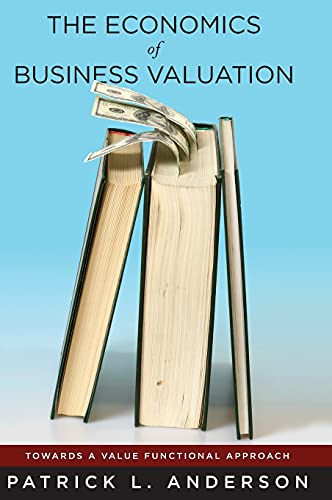

Most ebook files are in PDF format, so you can easily read them using various software such as Foxit Reader or directly on the Google Chrome browser.
Some ebook files are released by publishers in other formats such as .awz, .mobi, .epub, .fb2, etc. You may need to install specific software to read these formats on mobile/PC, such as Calibre.
Please read the tutorial at this link. https://ebooknice.com/page/post?id=faq
We offer FREE conversion to the popular formats you request; however, this may take some time. Therefore, right after payment, please email us, and we will try to provide the service as quickly as possible.
For some exceptional file formats or broken links (if any), please refrain from opening any disputes. Instead, email us first, and we will try to assist within a maximum of 6 hours.
EbookNice Team

Status:
Available4.4
39 reviews
ISBN 10: 0804758301
ISBN 13: 9780804758307
Author: Patrick Anderson
For decades, the market, asset, and income approaches to business valuation have taken center stage in the assessment of the firm. This book brings to light an expanded valuation toolkit, consisting of nine well-defined valuation principles hailing from the fields of economics, finance, accounting, taxation, and management. It ultimately argues that the "value functional" approach to business valuation avoids most of the shortcomings of its competitors, and more correctly matches the actual motivations and information set held by stakeholders. Much of what we know about corporate finance and mathematical finance derives from a narrow subset of firms: publicly traded corporations. The value functional approach can be readily applied to both large firms and companies that do not issue publicly traded stocks and bonds, cannot borrow without constraints, and often rely upon entrepreneurs to both finance and manage their operations. With historical side notes from an international set of sources and real-world exemplars that run throughout the text, this book is a future-facing resource for scholars in economics and finance, as well as the academically minded valuation practitioner.
Part I: Theories of Value
Chapter 1: Modern Value Quandaries
Chapter 2: Theories of Value
Chapter 3: The Failure of the Neoclassical Investment Rule
Part II: The Nature of the Firm
Chapter 4: The Nature of the Firm
Chapter 5: The Organization and Scale of Private Business
Chapter 6: Accounting for the Firm
Part III: Economic Theories of Value
Chapter 7: Value in Classical Economics
Chapter 8: Value in Neoclassical Economics
Chapter 9: Modern Recursive Equilibrium and the Basic Pricing Equation
Part IV: Finance Theories of Value
Chapter 10: Arbitrage-Free Pricing in Complete Markets
Chapter 11: Portfolio Pricing Methods
Chapter 12: Real Options and Expanded Net Present Value
Part V: Traditional and Value Functional Theories of Value
Chapter 13: Traditional Valuation Methods
Chapter 14: Practical Application of the Income Method
Chapter 15: The Value Functional: Theory
Part VI: Applications
Chapter 16: The Value Functional: Applications
Chapter 17: Applications: Finance and Valuation
Chapter 18: Applications: Law and Economics
Part VII: Appendices
Appendix A: Key Formula and Notation Summary
Appendix B: Guide to the Solutions Manual
Appendix C: Description of Subject Companies
the economics of business valuation towards a value functional approach
economic book value
business valuation book
economic value added book
a book value of a firm is
the book value of a company is calculated by
Tags: Patrick Anderson, Economics, Business